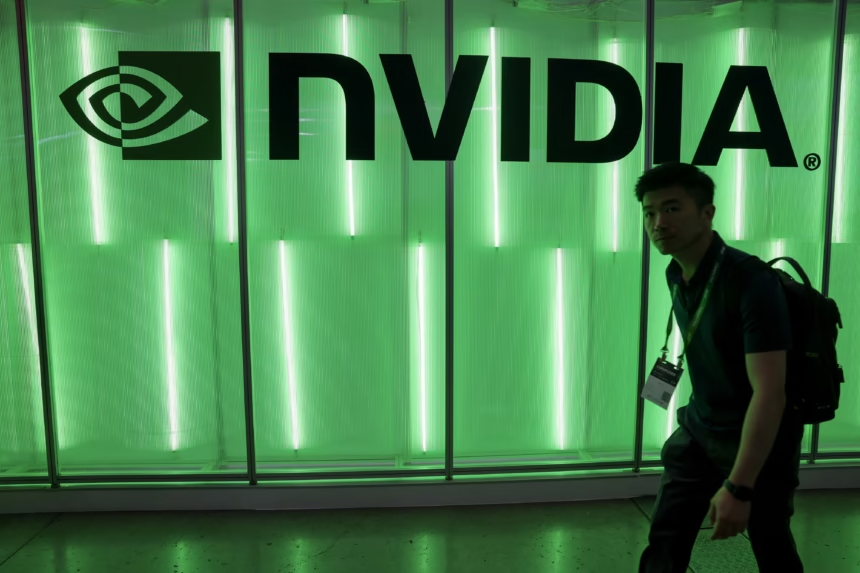Nvidia placed orders for 300,000 H20 chipsets with contract manufacturer TSMC last week.
🚀 Nvidia Orders 300,000 H20 Chips from TSMC
Nvidia has placed an order for 300,000 H20 GPUs with Taiwan’s TSMC, as demand from Chinese firms accelerates, according to multiple sources cited by Reuters New York Post+15Reuters+15X (formerly Twitter)+15.
This adds to an existing stockpile of 600,000–700,000 units—bringing total inventory close to 1 million chips, matching 2024’s full-year sales volume AAStocks+4Reuters+4X (formerly Twitter)+4.
🇨🇳 Why the Spike in China Demand?
Earlier this month, the Trump administration reversed an April ban, reinstating U.S. export licenses for the H20 chip to Chinese customers, enabling the resumption of legal sales Reddit+15The Washington Post+15Investing.com+15.
The H20 was specifically designed to comply with U.S. export controls, offering limited compute compared to Nvidia’s flagship H100 or newer Blackwell chips—but still widely compatible with Nvidia’s CUDA software ecosystem TechRadar+11Reuters+11Investing.com+11.
⚖️ Export Approval Still Pending
Though the order is placed, Nvidia still must secure final export licenses from the U.S. Department of Commerce. The company has received assurances licenses are forthcoming, but none have been formally approved yet New York Post+11Reuters+11AAStocks+11.
A full-scale restart of H20 production would require significant lead time—reports say it could take up to nine months to reactivate wafer production pipelines Freedom 96.9+3Reuters+3Benzinga+3.
🍃 Policy Shift: Geopolitics Meets Trade
The authority to resume H20 exports was reportedly part of a complex negotiation involving rare earth magnet trade with China, drawing bipartisan criticism in the U.S. over national security concerns Reuters+15The Washington Post+15Reuters+15.
A group of 20 national security experts recently wrote to Commerce Secretary Howard Lutnick warning this policy shift may undermine future export control credibility Reuters+3The Washington Post+3The Times of India+3.
Critics argue that allowing H20 access may undermine U.S. efforts to preserve its lead in AI—a concern heightened by ongoing chip smuggling of more advanced models like the B200 and H100 into China via black-market channels Reddit+13Vox+13Financial Times+13.
🧠 Strategic Value for Nvidia
Re-entering the Chinese market is critical for Nvidia to retain developers on its platform, preventing them from migrating to domestic alternatives like Huawei’s chips or local software stacks The Economic Times+4Reuters+4Freedom 96.9+4.
The H20 remains a regulatory-compliant conduit for continued access to a vast customer base that generated approximately $17 billion in revenue for Nvidia in fiscal year 2025 (13% of total) Reuters.
CEO Jensen Huang emphasized that the ordering volume from China will determine whether TSMC production restarts—a process that could take nearly nine months Benzinga+4Reuters+4The Economic Times+4.
🔍 Broader AI & Chip Industry Implications
| Dimension | Significance |
|---|---|
| Access vs Security | Trade-offs between U.S. tech dominance and geopolitical negotiations |
| China’s AI Momentum | H20 chips remain vital for Chinese companies advancing AI models |
| U.S. Semiconductor Policy | Reversal has drawn sharp critiques from security analysts |
| Supply Chain Risk | Smuggling of banned chips still prevalent, reflecting enforcement gaps |
Even after the ban, over $1 billion worth of banned Nvidia AI chips were smuggled into China via intermediaries in Southeast Asia—underlining the limitations of export controls alone Omni Ekonomi+15Financial Times+15New York Post+15Investing.com+8Wikipedia+8Reddit+8Reuters+3The Washington Post+3The Times of India+3.
✅ Bottom Line
Nvidia’s 300,000-unit H20 order from TSMC signals renewed confidence in the Chinese market after policy shifts allowed export resumption. While these chips lack the raw performance of Nvidia’s highest-end models, their compatibility with the CUDA ecosystem ensures deep adoption in China’s AI sector. With export licenses still pending, geopolitical and security debates are heating up, and China’s continued demand underscores the high-stakes nature of semiconductor diplomacy.







